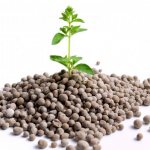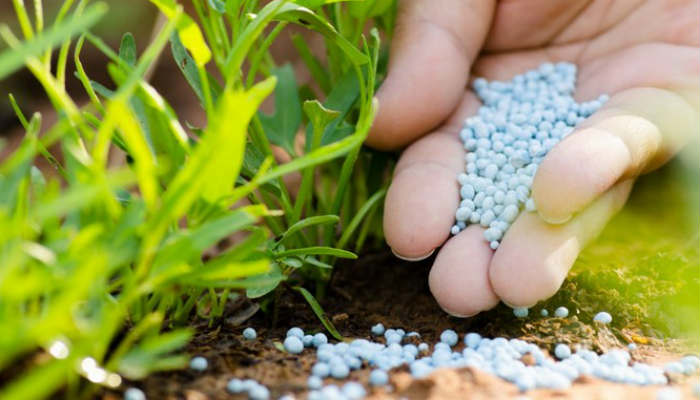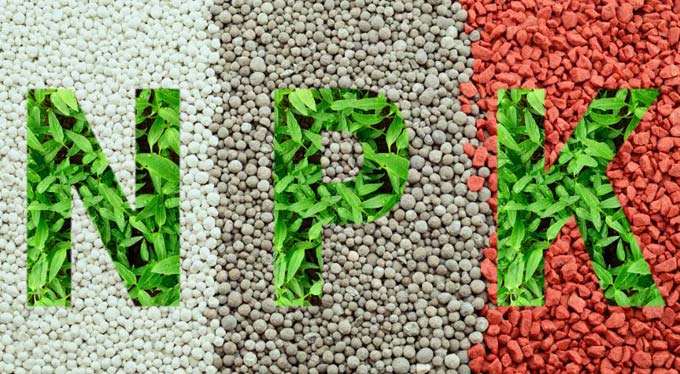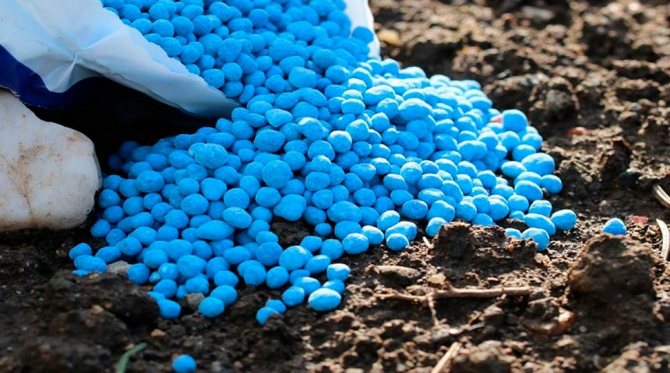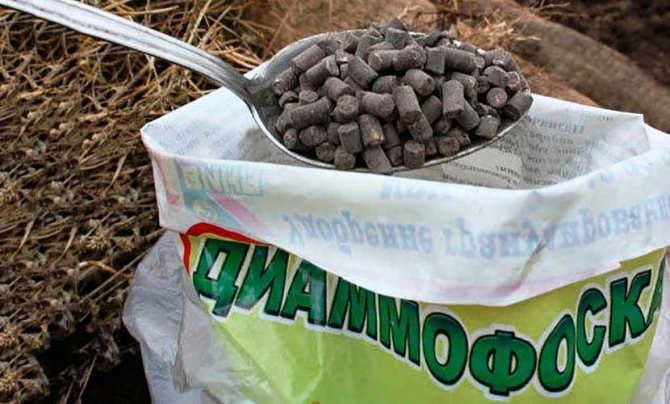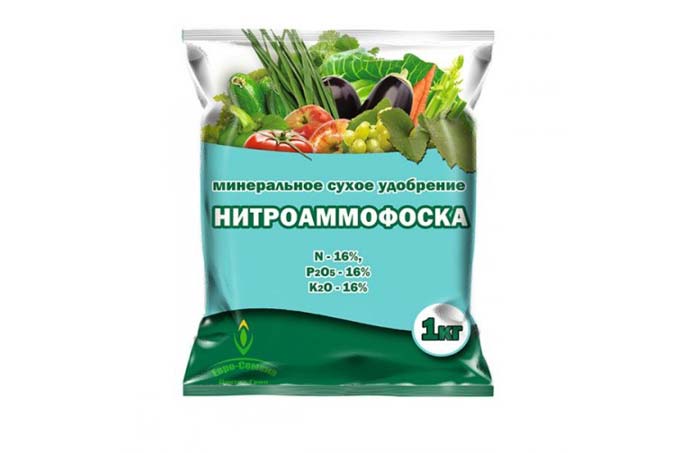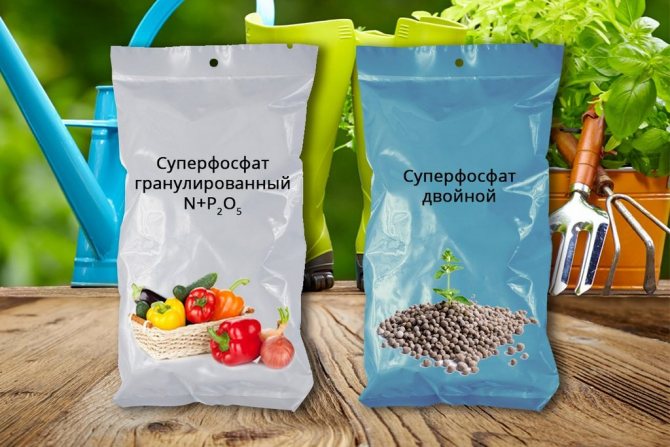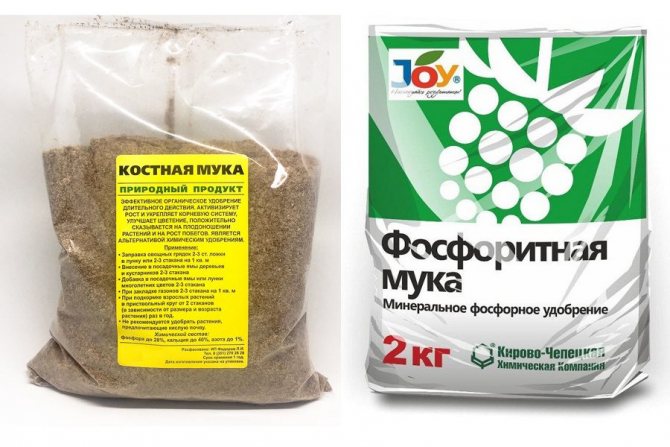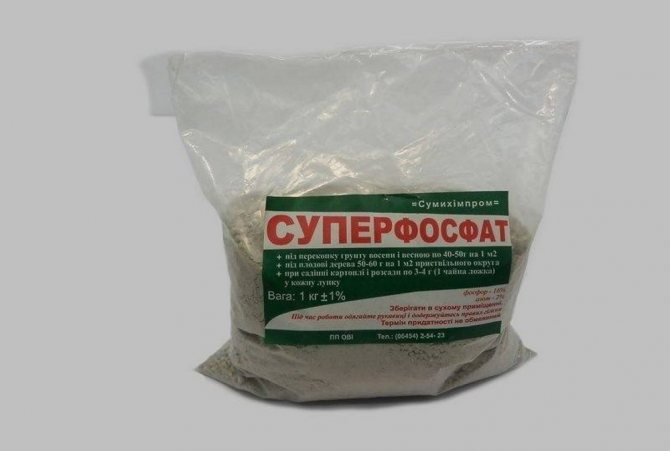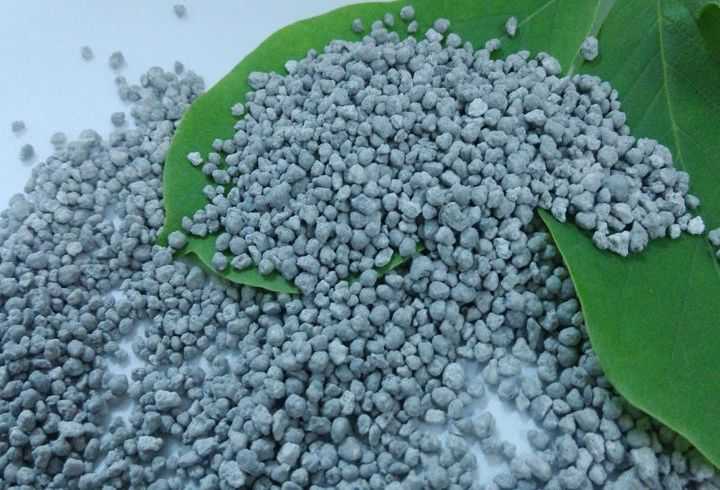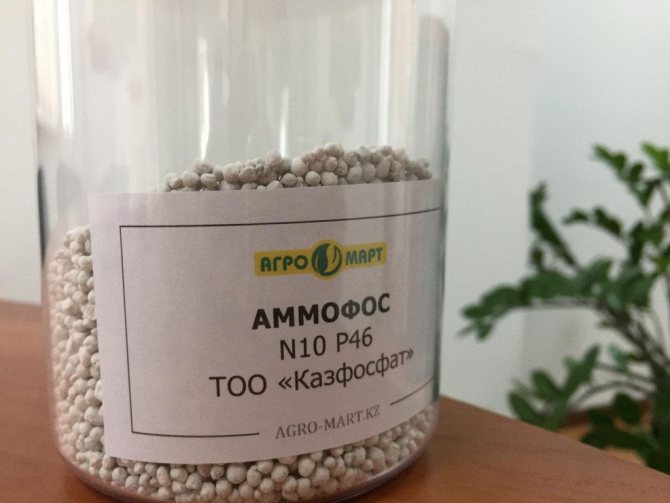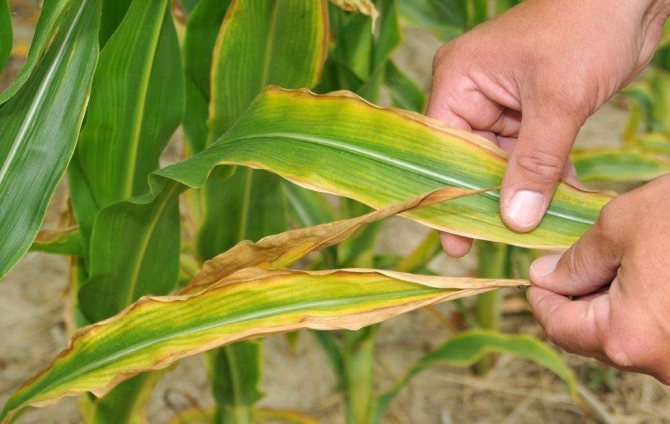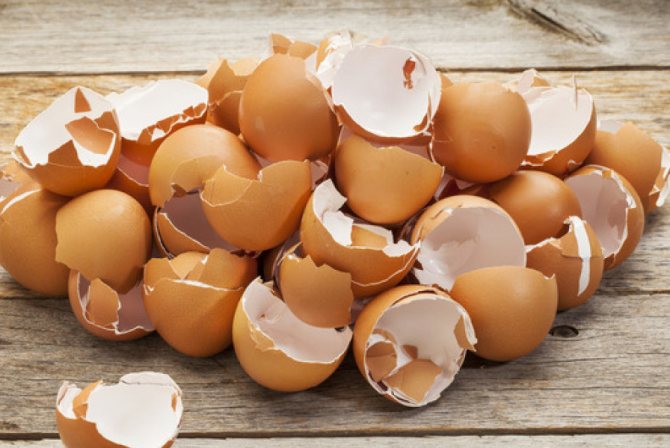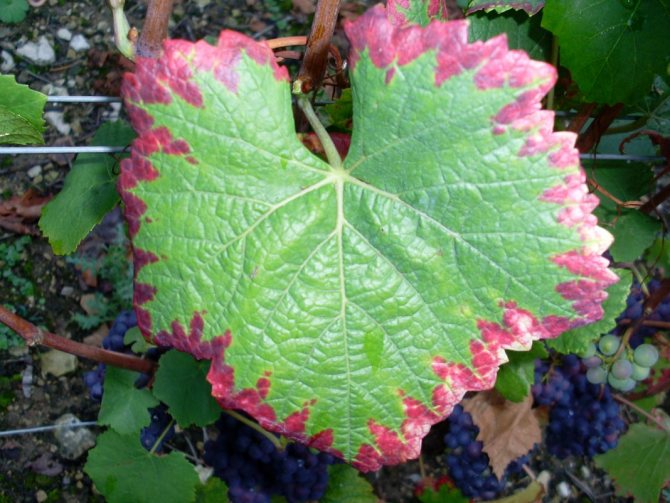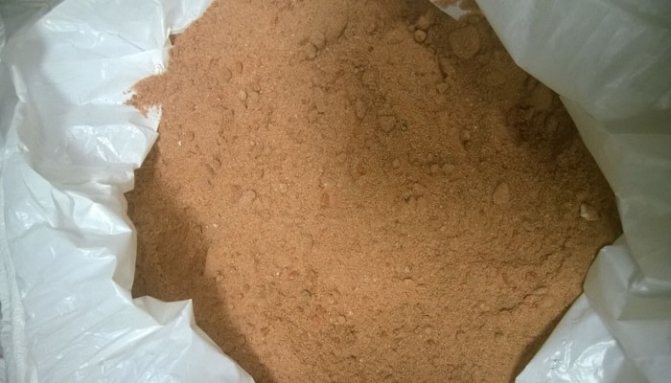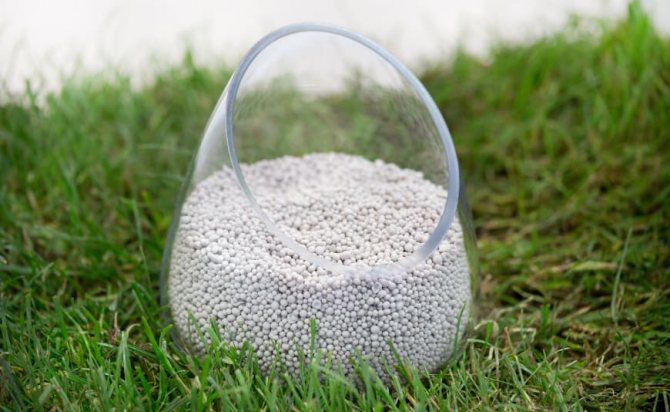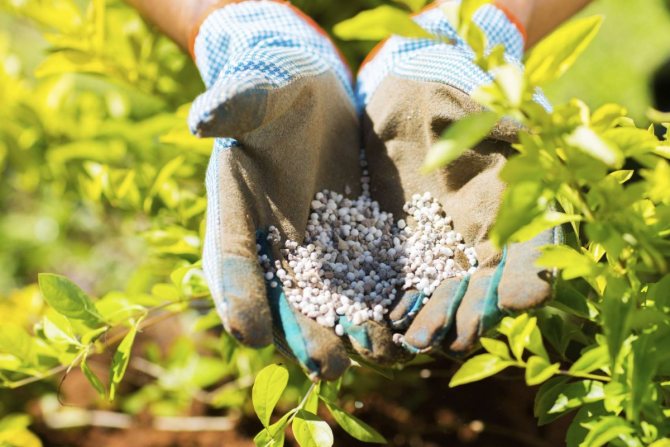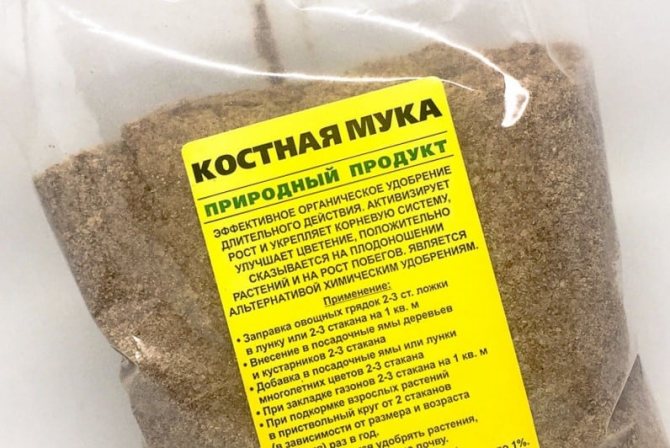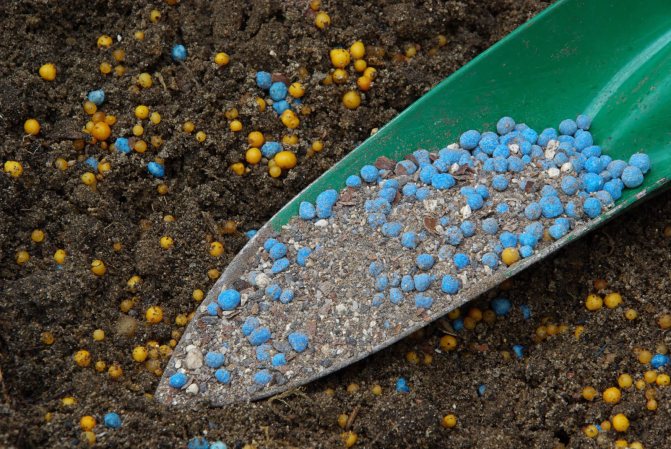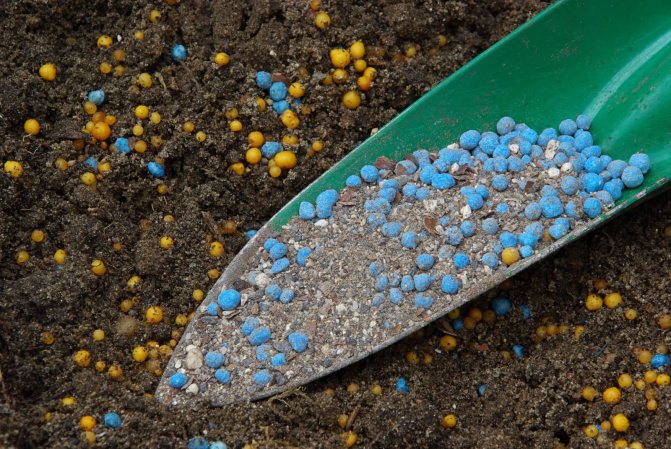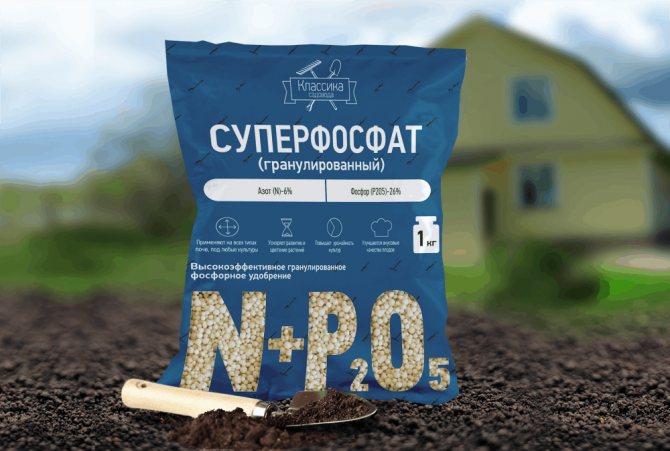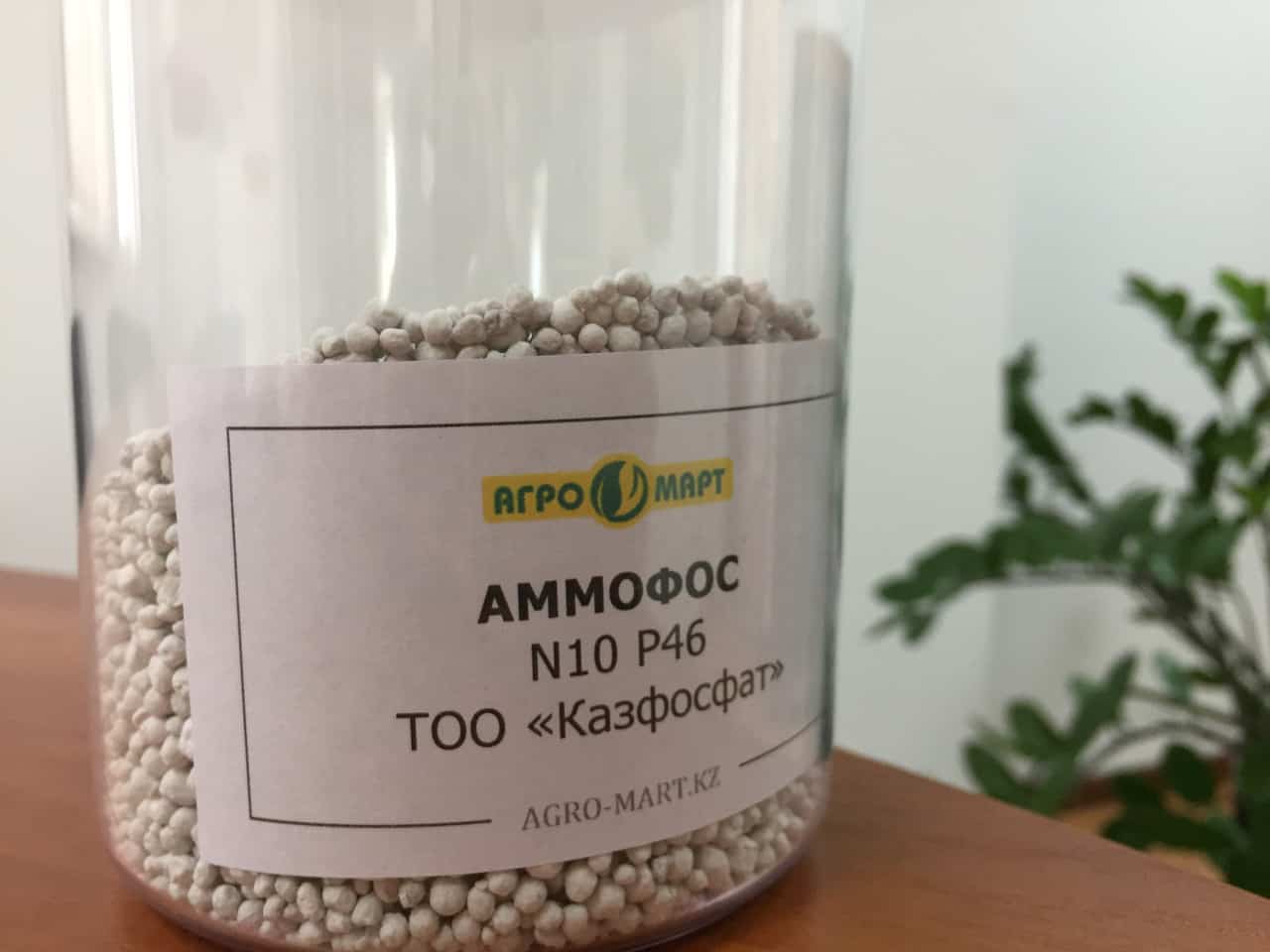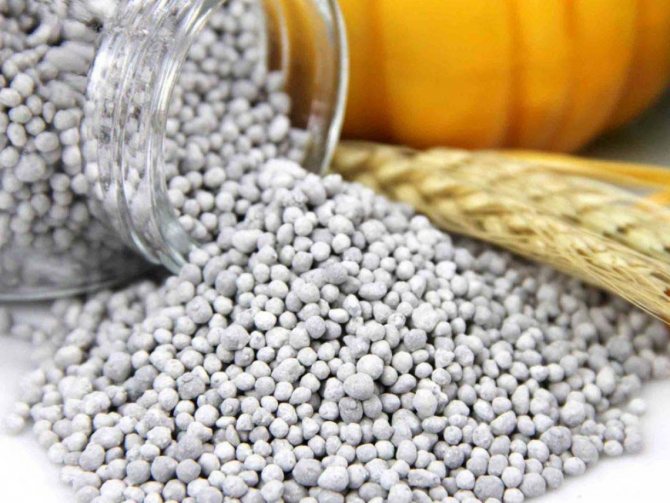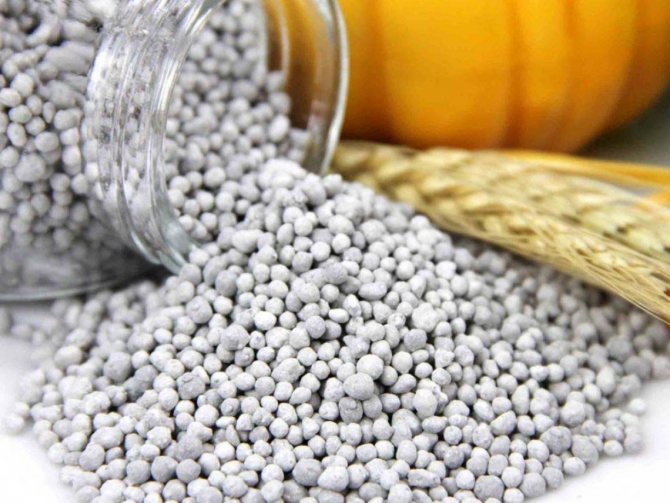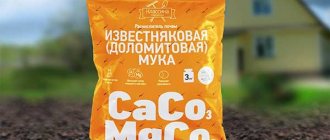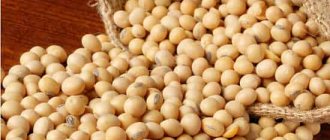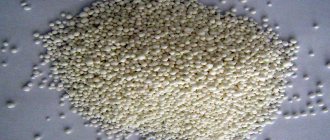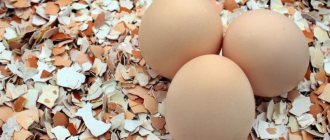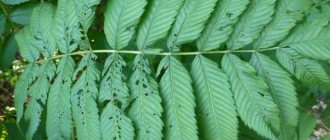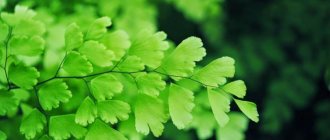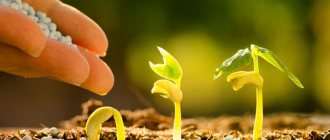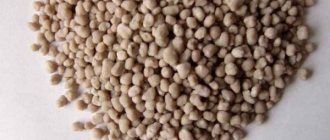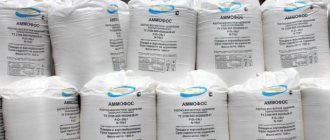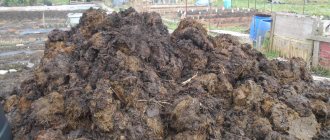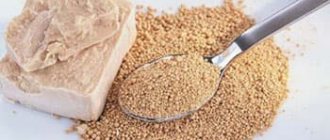It's no secret that experienced gardeners and gardeners use fertilizers to get a good harvest. Thanks to them, the earth is filled with the necessary nutrients that affect the growth of plants. One of the most common are phosphate fertilizers. "Which ones?" - the question suggests itself. It is especially relevant for novice gardeners. This type of fertilizer is necessary for many plants, since the lack of phosphorus in the soil negatively affects them. Its main advantage is the fact that even an overabundance cannot harm crops. It is absorbed exactly in the amount required. Plants that germinate in phosphorus-rich soil thrive and yield good yields.
The article will provide detailed information about phosphate fertilizers, their value and application.
The importance of phosphate fertilizers
Fertilizers are the main component of the full development of the plant.
The value of phosphorus is significant, with the help of it:
- culture better tolerates negative environmental factors;
- plant growth progresses;
- the quality and quantity of seeds improves;
- the metabolism of the plant is accelerated, which entails its accelerated growth and higher productivity.
The role of phosphorus in plant life is great. The main thing is that there can be no overdose, since the plant assimilates only the amount of fertilizer that it needs.
Overdose cases
Abuse of the potassium-phosphorus mix harms not only garden crops, but also the soil. It is impossible to exceed the doses and consumption rates specified in the instructions for the drug. Fat solutions and nutritional mixtures are not prepared by eye.
An overdose of mineral fertilizers threatens:
- a decrease in soil fertility;
- increased harm from pesticides used;
- pollution of the environment;
- harm to human health;
- accumulation of nitrates in fruits;
- the death of garden plantings.
If the fertilizing was applied incorrectly, then it is necessary to water the planting abundantly once (for tall plants) or to repeatedly irrigate the beds with new soil pouring into the holes (for low-growing crops).
Phosphorus-potassium formulations, when used correctly, will prevent serious crop problems from occurring. Their introduction will have a beneficial effect on planting, protect vegetation from diseases and pests.
It is important to choose the best composition for a particular type of crop and follow the recommendations for its use exactly so as not to harm green organisms.
Production of phosphorus supplements
For the manufacture of such substances, raw materials are taken as a basis.:
- phosphorites;
- apatite;
- sulfuric acid;
- phosphoric acid;
- bones.
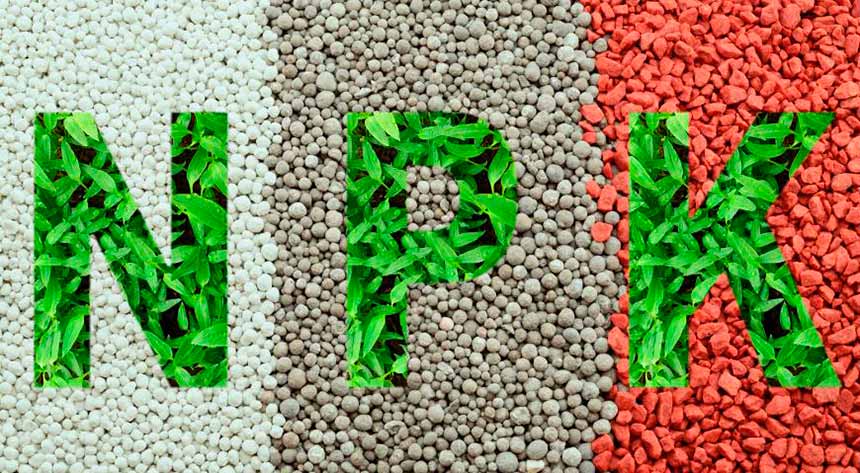
Phosphate fertilizers for gardeners and gardeners
In order for plants to assimilate fertilizers without additional difficulties, regardless of the soil, it is necessary to convert insoluble natural phosphates into salts, which are easily absorbed and dissolve in water without problems.
There are several groups for the processing of phosphates:
- by decomposition with acids (sulfuric, nitric, phosphoric);
- by means of hydrothermal treatment;
- by grinding;
- by melting phosphorus.
The most popular phosphate fertilizers are considered to be superphosphate and double superphosphate.
Signs of phosphorus deficiency
Lack of phosphorus in the soil is reflected in this way:
- the color of the plant becomes darker, gradually acquiring a violet-black tone;
- leaves change in shape, fall off;
- the lower leaves are covered with dark spots;
- plants grow in bush without reaching the desired height;
- yield deteriorates;
- leaf petioles acquire a lilac hue;
- leaf internodes become shorter;
- roots grow at a slower pace.
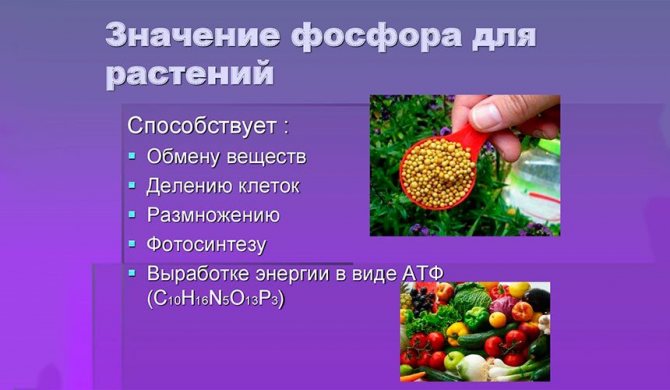

The importance of phosphorus for plants
With the timely use of phosphorus dressings, it is likely to prevent such negative consequences.
conclusions
Without top dressing with potassium and phosphorus, the soil will quickly lose fertility, and the owners of summer cottages - harvest and time. To use the fertilizer correctly, you must follow the instructions and common sense to maintain the balance of essential nutrients in the soil.
Did you like the article? Share with your friends:


Hello dear readers! I hope the information from the article was helpful. Always open for communication - comments, suggestions, what else you want to see on the site, and even criticism. Peace and happiness to everyone! ?
Types and applications of phosphorus fertilizers
In general, all substances of this type are divided into the following types:
- water soluble;
- citrate and lemon-soluble;
- sparingly soluble;
- complex.
Nitrogen-phosphorus-potassium and phosphorus-potassium fertilizers are complex. Phosphate fertilizers are often used in the fall, as many of the components cannot penetrate into the deep soil layer. They are also added to the soil in the spring before sowing or during sowing.
The importance of phosphorus for plants
Plants absorb the element throughout the growing season. However, the greatest need appears in the phases of intensive growth, flowering and fruiting. Phosphorus improves the quality of the fruit. This is due to the fact that without this chemical compound metabolic processes cannot take place, when energy and nutrition are transferred from one part of the plant to another.
In the case of P deficiency, the entire culture begins to suffer, not developing fully. The generative function is impaired. As a result, there is a lack of harvest or its loss. In the future, the plant, suffering from a lack of a chemical element in the soil and its indifference to vital processes, dies completely. Phosphate fertilizers are also entrusted with the task of preventing negative consequences.
For your information!
Along with phosphorus, nitrogen and potassium are included in the triad of the most important elements for plant development. However, the disappearance of the first of the soil composition can lead to the death of the planet due to the widespread depletion of terrestrial flora.
Water Soluble Phosphate Fertilizers
"Superphosphate"
It is the most used agrophosphate, its composition includes:
- monocalcium phosphate;
- phosphoric acid;
- trace elements.
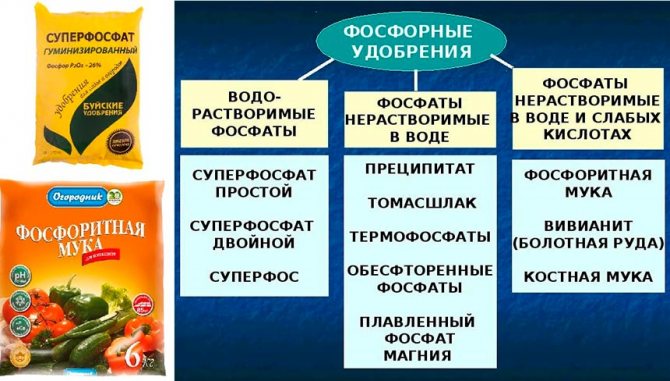

Classes of phosphorus fertilizers
This fertilizer will perform its functions in any soil; it is added to feed all crops. They are used both singly and as part of special mixtures. It helps the plant develop correctly, strengthen its own immunity and be resistant to low air temperatures.
"Double superphosphate"
This type of feeding includes concentrated phosphorus (40% or more). Plants are treated with this substance in autumn, less often in spring. 1/2 of the recommended dose should be used, as an overly concentrated solution can destroy the root system of the plant. Often used to improve the growth of fruit shrubs and trees.
There is also "Superphos" - a concentrated substance in granules.It can be used for all crops, and, in fact, is universal.
Superphosphate
Phosphate fertilizers that contain monocalcium phosphate (Ca (H2PO4) 2), sulfur, phosphoric acid, magnesium and other elements are called superphosphates. They are easily absorbed by plants, therefore they are widely used in the agricultural field. You can use this top dressing for any crop, regardless of the type of soil.
Superphosphate has a positive effect on the growth and development of crops, promotes the development of immunity and strengthens it as much as possible. After processing, plants can even tolerate frost. Fertilizer is used, as a rule, in combination with other species, as well as individually. The yield increases significantly.
Such phosphorus fertilizers are intended for tomatoes and other vegetables, fruit varieties, cereals. It should be noted that this environment is the most favorable for tomatoes. They not only begin to grow rapidly, but also significantly increase the number of ovaries. Top dressing is done in two ways:
- before planting - 15-20 g under one bush;
- during flowering - 0.5 l is poured into the trunk circle.
In liquid form, superphosphate is diluted in proportions of 100 g per 10 liters of warm water.
Sparingly soluble phosphorus supplements
"Ammophos"
Phosphoric acid is neutralized with ammonia. After such a reaction, nitrogen in percentage remains significantly less than phosphorus. It can be used at any time of the year, but during the fall and spring, namely when planting, it shows the best results.
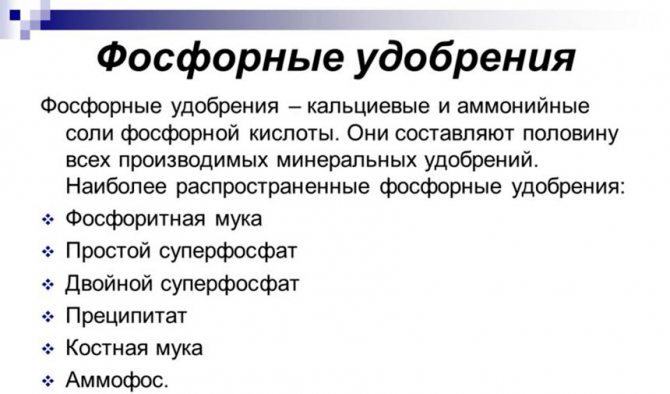

Calcium and ammonium salts of phosphoric acid
For feeding in the spring, it is recommended to adhere to the following proportions:
- for vegetables and flowers - 15-25 grams per 1 sq. m;
- for fruit-bearing trees - 20–35 grams per square meter;
- for ornamental plants and lawns - 20 grams per 1 sq. m.
The substance is applicable for feeding cucumbers, this makes it easier for them to withstand temperature changes.
"Diammophos"
Reduces soil acidity. It can be used together with animal organics. If we are talking about using with poultry droppings, the substance must be kept for a long time and diluted with water, otherwise it may turn out to be too concentrated liquid for plants.
Do you use folk signs in gardening?
Applicable:
- for potatoes - 1 tsp. during landing;
- for tomatoes and cucumbers - before planting, mixing with the ground, or during flowering, diluting with water.
It is also used for most garden crops as a pre-sowing fertilizer.
"Phosphate flour"
Formed in the process of grinding phosphorites into a gray powder. Has a delayed action, is often used for sowing. It is mainly used to increase the yield of field crops.
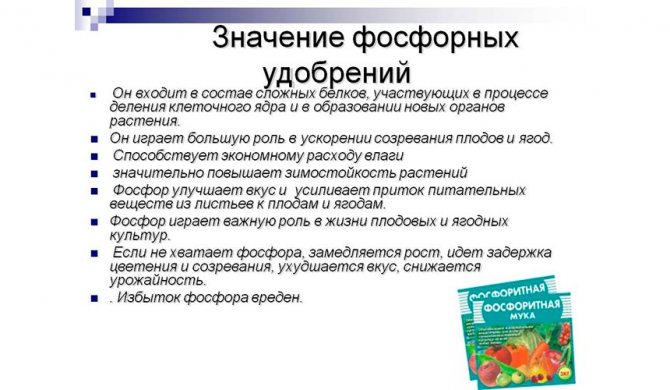

The importance of phosphate fertilizers in agriculture
"Vivianite"
It is a fine powder, easy to disperse. It occurs in the environment as white strata or small deposits. It tends to acquire a blue tint upon contact with air.
Chemical Precautions
Handling fats rich in phosphorus and potassium requires precautions. Be sure to use glasses, a respirator, protective clothing and gloves. Upon completion of the treatment of garden beds with mineral fertilization, the clothes are ventilated and washed in mash water with the addition of baking soda.
Many phosphorus supplements, such as phosphate rock, can irritate the mucous membranes of the mouth and nasopharynx when inhaled. Contact with open skin is also dangerous. It provokes redness, irritation, and burns.


The storage of chemicals requires compliance with the rules:
- the container must be airtight;
- the premises are not residential;
- access for children and animals to mineral fertilizers is prohibited;
- do not store fat near food, animal feed.
The utensils used for the preparation of mixtures of fat or their solutions are not used for the preparation and consumption of food.
When working with chemicals, it is forbidden to eat, drink, smoke. Upon completion of the processing of the garden, it is required to thoroughly wash your hands and face, take a shower, and rinse your mouth.
Children, women in position and nursing mothers are not allowed to work with mineral fertilizers.
Applying potassium-phosphorus mixes, the instructions for them are strictly followed, do not exceed the dosage and frequency of introduction.
If, upon completion of work with chemicals, symptoms of poisoning such as nausea, vomiting, dizziness appear, they urgently seek medical help. If the fertilizer gets into the mouth and is swallowed, the stomach is washed. After the procedure, it is advisable to drink milk or oatmeal jelly.
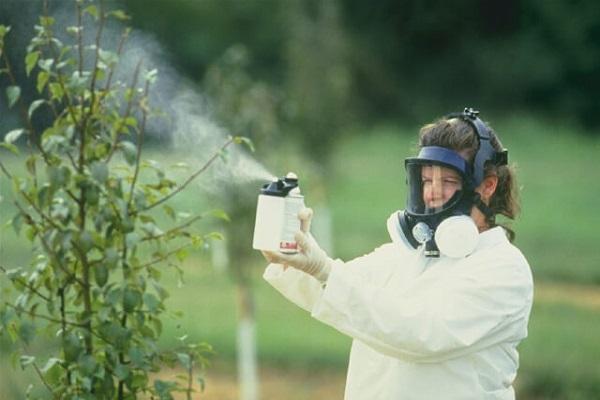

Citrate and lemon-soluble
"Bone flour"
Produced organically, it is a product of the processing of cattle bones. It is used for almost all garden crops, and is also widely used for domestic plants at the rate of 0.3 tsp. bone meal in 1 spoon of a flower pot.
"Precipitate"
Contains a large amount of phosphorus. It looks like a white powder, unable to dissolve and absorb moisture. It dissolves in weak acid, vegetable crops absorb it well. It is necessary to use twice less than "Superphosphate".
"Thermophosphate"
The "Thermophosphate" contains from 14 to 30% phosphorus, depending on its type.
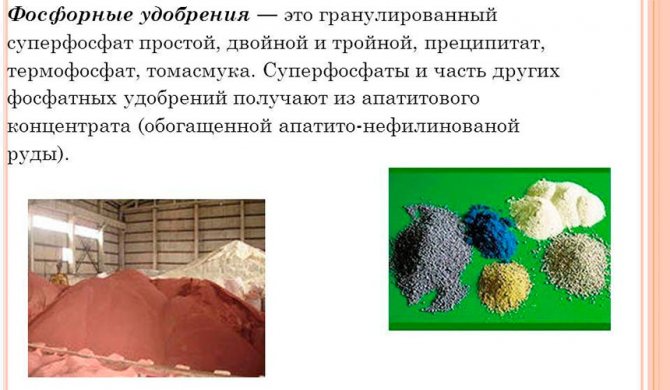

What is phosphate fertilizer
Allocate:
- open-hearth slag;
- defluorinated phosphate;
- volume slag.
Open-hearth slag is often used for soil with an acidic environment, the phosphorus content does not exceed 15%. The defluorinated phosphate contains 30% phosphorus. It is actively used on black soil.
Tomoslag is a residual product of iron and steel ore processing. It is used for soil of any composition, however, in acidic soil, its properties are manifested to the maximum. It contains about 14% phosphorus.
Terms of Use
Treatment with such a substance is carried out:
- during sowing;
- before sowing;
- when watering / feeding.
Depending on the type of soil, different types of phosphorus fertilization are selected.:
- water-soluble fertilizers are used for all crops, regardless of soil;
- citrate and lemon soluble are especially effective for acidic soil;
- hardly soluble fertilizers show their best properties in degraded and leached soil.
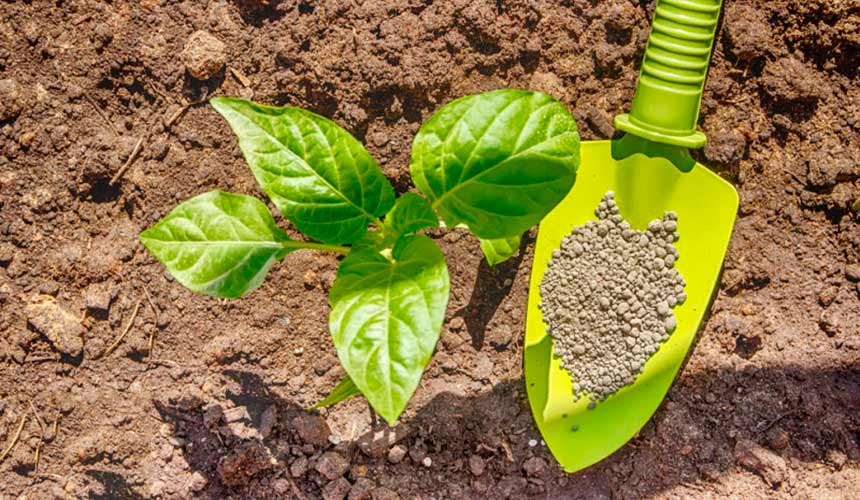

How to use phosphate fertilizer
In order to get a rich harvest from agricultural crops, you need to worry about their timely fertilization.
Testimonials
Elena:
“I believed that ammonium nitrate is the solution to the problem of removing nutrients from the soil. But after two years of growing tomatoes, I noticed that the fruits were underdeveloped. I decided to try phosphate fertilizer. The result is pleasing. The harvest was rich and healthy. Now I use a phosphorus-containing top dressing every year. "
Andrew:
“I used superphosphate for the cultivation of crops. But the main thing with him is not to overdo it. It is necessary to carefully calculate the dose due to the significant concentration of phosphorus in it. Therefore, I decided to add bone meal under the potatoes and did not regret it. The tubers are large, the shape is correct. "
Phosphate fertilizers are a "tool" that, in the hands of a knowledgeable farmer, allows not only to get a rich harvest every year, but also to maintain an optimal soil composition for all vegetation as a whole. After all, phosphorus is an important element, without which the flora can simply perish.

